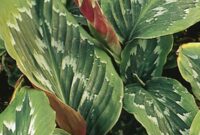Introduction
Welcome to our guide on side dressing fertilizer—a crucial practice in modern agriculture that can significantly impact crop health and yield.
In this blog, we’ll dive into the world of side dressing fertilizer, exploring what it is, why it matters, and how it can benefit your crops.
Whether you’re a seasoned farmer or a gardening enthusiast, understanding the ins and outs of side dressing fertilizer can take your agricultural efforts to the next level.
Why Side Dressing Fertilizer Matters
Before we delve into the details, let’s address the fundamental question: What is side dressing fertilizer, and why is it so important?
Side dressing fertilizer is a targeted approach to delivering essential nutrients to growing plants during the middle stages of their development. It involves applying fertilizer directly to the soil alongside the crop rows, rather than broadcasting it across the entire field before planting.
This precision-oriented technique serves a critical purpose in agriculture. It allows farmers and gardeners to supply the right nutrients at the right time, precisely when the plants need them the most.
By doing so, it optimizes nutrient uptake, minimizes waste, and fosters healthier, more productive crops.
Preview of Key Points
In the sections that follow, we will explore the concept of side dressing fertilizer in depth. Here’s a sneak peek of the main points we’ll be covering:
- What Is Side Dressing Fertilizer?: We’ll start by defining side dressing fertilizer and distinguishing it from other common fertilization methods. You’ll gain a clear understanding of how this technique works and why it’s a game-changer in modern agriculture.
- Benefits of Side Dressing Fertilizer: Discover the numerous advantages of employing side dressing fertilizer in your farming practices. We’ll explain how it can lead to healthier plants, increased yields, and sustainable agricultural practices.
- When and How to Apply Side Dressing Fertilizer: Timing is crucial when it comes to side dressing. We’ll provide insights into when and how to apply side dressing fertilizer to ensure the best results for your crops.
- Crops That Benefit from Side Dressing: Not all crops require side dressing, but many can benefit from this technique. We’ll delve into which types of crops are most receptive to side dressing and share real-world examples.
By the end of this guide, you’ll have a comprehensive understanding of side dressing fertilizer and the compelling reasons why it should be an essential component of your crop management strategy.
Let’s get started with the basics: What exactly is side dressing fertilizer, and how does it differ from other fertilization methods?
What Is Side Dressing Fertilizer?
In the world of agriculture, precision is key, and side dressing fertilizer is a shining example of this precision. To fully appreciate its value, let’s start by exploring what side dressing fertilizer is and its pivotal role in modern farming practices.
Defining Side Dressing Fertilizer
Side dressing fertilizer is a targeted method of nutrient application in agriculture. It involves the precise placement of fertilizers directly into the soil near the base of growing plants, typically alongside the crop rows. This method is carried out during the mid-to-late stages of a plant’s growth cycle, when nutrient demand is at its peak.
The primary goal of side dressing is to provide essential nutrients, such as nitrogen, phosphorus, and potassium, to crops precisely when they need them for optimal growth and development. By delivering nutrients in close proximity to the root zone, side dressing ensures efficient uptake and utilization by the plants, minimizing nutrient loss and waste.
How Side Dressing Differs from Other Fertilization Methods
To grasp the significance of side dressing, it’s essential to understand how it differs from traditional fertilization methods. In contrast to broadcast fertilization, where fertilizers are spread uniformly across an entire field before planting, side dressing is a localized approach. Here’s a breakdown of the key differences:
- Precision: Side dressing is highly precise, allowing growers to target specific areas where plants need nutrients the most. Broadcast fertilization, on the other hand, treats the entire field uniformly, which can lead to over- or under-fertilization in different areas.
- Timing: Side dressing is typically performed during the active growth stages of crops, ensuring that nutrients are available when plants require them for key growth processes. Broadcast fertilization occurs before planting, and its effectiveness depends on environmental factors and the timing of planting.
- Nutrient Efficiency: Side dressing optimizes nutrient efficiency by minimizing losses due to volatilization, leaching, or runoff. Broadcast fertilization is more susceptible to these forms of nutrient loss, which can have environmental and economic consequences.
Key Nutrients in Side Dressing
Now that we understand the concept of side dressing, let’s delve into the nutrients commonly used in this practice.
While the specific nutrient requirements may vary depending on the crop and soil conditions, the following nutrients are frequently employed in side dressing:
- Nitrogen (N): Nitrogen is essential for plant growth and is often a key component of side dressing formulations. It plays a crucial role in leaf development, protein synthesis, and overall plant vigor.
- Phosphorus (P): Phosphorus is vital for root development, energy transfer, and the formation of DNA and RNA. It is especially important during the early stages of plant growth.
- Potassium (K): Potassium is essential for various physiological processes, including water uptake, photosynthesis, and disease resistance. It contributes to overall plant health and stress tolerance.
As we continue our exploration of side dressing fertilizer, we’ll uncover the numerous benefits it offers to both farmers and the environment.
Understanding the role of these key nutrients and how they are applied in side dressing will help you appreciate its significance in modern agricultural practices.
Benefits of Side Dressing Fertilizer
Side dressing fertilizer is not just another agricultural practice; it’s a precision technique that comes with a host of benefits for both crops and the environment.
1. Precision Nutrition for Healthy Crops
One of the most significant advantages of side dressing fertilizer is its precision. By delivering nutrients directly to the root zone of growing plants, side dressing ensures that crops receive the right nutrients at the right time.
This precision nutrition promotes crop health in several ways:
- Optimal Growth: Crops have varying nutrient requirements at different growth stages. Side dressing allows growers to adjust nutrient applications to meet these changing needs, resulting in optimal growth and development.
- Reduced Stress: Nutrient stress can stunt plant growth and make crops more susceptible to diseases and pests. Side dressing helps mitigate nutrient stress by providing a consistent supply of essential elements.
- Higher Yields: Healthy, well-nourished plants are more likely to produce higher yields, making side dressing an essential tool for maximizing agricultural productivity.
2. Enhanced Nutrient Use Efficiency
Side dressing excels at maximizing nutrient use efficiency, meaning it minimizes nutrient waste. Here’s how:
- Reduced Leaching and Runoff: Broadcasting fertilizers across fields can lead to nutrient runoff and leaching, which can harm water bodies and waste valuable resources. Side dressing confines nutrient application to the root zone, reducing the risk of environmental pollution.
- Minimized Volatilization: Some nutrients, like nitrogen, are prone to volatilization when exposed to air. Side dressing minimizes the surface area exposed to the atmosphere, reducing nitrogen losses.
3. Environmental Sustainability
In an era where sustainable agriculture is paramount, side dressing fertilizer aligns well with environmentally friendly practices:
- Reduced Chemical Footprint: Targeted nutrient application means using fewer fertilizers overall, reducing the chemical footprint in agriculture.
- Lower Environmental Impact: By minimizing nutrient runoff and leaching, side dressing helps protect water quality and reduces the negative environmental impact of agriculture.
- Conservation of Resources: Efficient nutrient utilization means less waste and more responsible use of limited resources, including fertilizers.
In essence, side dressing fertilizer isn’t just about crop health and yield; it’s also about responsible farming and environmental stewardship.
This precision technique offers a win-win scenario, benefiting growers with healthier, more productive crops while contributing to sustainable agriculture practices.
When and How to Apply Side Dressing Fertilizer
Understanding when and how to apply side dressing fertilizer is crucial for reaping the maximum benefits from this precision technique.
Timing Is Key: When to Apply Side Dressing Fertilizer
The timing of side dressing applications depends on the specific crop and its growth stage. In general, side dressing is most effective when performed during the active growth phases of the plants. Here’s a general guideline for common crops:
- Vegetables: Side dress vegetable crops when they reach their rapid growth phase. This often occurs two to four weeks after transplanting or when the plants have a well-established root system.
- Corn: For corn, side dressing is typically done when the plants are between 12 to 24 inches tall and have a sufficient number of leaves. This corresponds to the V4 to V8 stages.
- Fruit Trees: Apply side dressing to fruit trees in the spring, just before the growing season starts. This helps provide a nutrient boost during the period of active growth and fruit development.
Step-by-Step Guide to Side Dressing
Now, let’s walk through the process of applying side dressing fertilizer step by step:
Step 1: Gather Your Materials
- You’ll need the appropriate fertilizer for your crop’s nutrient needs.
- Safety gear, including gloves and protective eyewear, is essential when handling fertilizers.
Step 2: Calculate the Application Rate
- Determine the recommended fertilizer rate based on your crop type, size, and nutrient requirements. Consult local agricultural resources or soil test results for guidance.
Step 3: Prepare the Fertilizer
- Measure out the calculated amount of fertilizer in accordance with the application rate.
- Avoid overfilling the fertilizer applicator to prevent waste and ensure accuracy.
Step 4: Apply the Fertilizer
- Create furrows or trenches alongside the crop rows, ensuring they are a few inches away from the plant stems.
- Sprinkle or place the fertilizer evenly within the furrows, ensuring it doesn’t come into direct contact with the plants.
- Lightly cover the fertilizer with soil to prevent nutrient loss due to volatilization or runoff.
Step 5: Water the Area
- After applying the fertilizer, water the soil gently to help dissolve the nutrients and carry them to the root zone.
Optimizing Your Side Dressing Technique
To make the most of your side dressing efforts, consider these additional tips:
- Monitor Soil Conditions: Perform a soil test to understand nutrient levels and adjust your side dressing strategy accordingly.
- Weather Considerations: Be mindful of weather conditions. Apply side dressing when rain is expected or when you can irrigate shortly after application to prevent nutrient loss.
- Equipment Maintenance: Ensure your side dressing equipment is in good working order to achieve accurate and consistent application.
Crops That Benefit from Side Dressing Fertilizer
When it comes to side dressing fertilizer, not all crops are created equal. Some crops, due to their growth patterns and nutrient requirements, benefit significantly from this precision application technique.
Crops Primed for Side Dressing
While many crops can benefit from side dressing, some are particularly well-suited to this technique. Here are a few examples:
- Corn: Corn is often considered the poster child for side dressing. Its rapid growth and high nutrient demands make it an ideal candidate. Side dressing with nitrogen, for instance, can substantially boost corn yields and reduce the risk of nutrient loss.
- Vegetables: Many vegetable crops, such as tomatoes, peppers, and cucumbers, exhibit vigorous growth during the growing season. Side dressing ensures these high-value crops receive the nutrients they need for robust production.
- Fruit Trees: Apple, peach, and pear trees, among others, benefit from side dressing during the active growing season. Proper nutrient management supports healthy tree growth and fruit development.
Specific Examples and Case Studies
Let’s delve deeper into the benefits of side dressing by examining specific examples and case studies:
- Corn Yield Enhancement: A study conducted on corn farms in the Midwest found that side dressing with nitrogen resulted in a significant increase in yield compared to pre-plant applications. This method allowed growers to tailor nitrogen applications to the crop’s growth stage, ultimately leading to higher profits.
- Tomato Quality Improvement: Tomato growers in a region with variable soil conditions adopted side dressing as a nutrient management strategy. The targeted application of nutrients, including calcium and potassium, resulted in improved fruit quality, reduced blossom end rot, and increased marketability.
- Fruit Tree Health: An orchard in California implemented a side dressing regimen for their fruit trees during the spring. This approach enhanced nutrient availability during the critical fruit development stage, resulting in larger and healthier fruit, increased market value, and improved overall orchard health.
Each crop has unique nutrient requirements at different growth stages. Failing to meet these specific needs can lead to suboptimal growth, lower yields, and decreased crop quality.
Side dressing allows growers to fine-tune nutrient delivery based on these requirements, promoting healthier and more productive crops.
Understanding the nutrient demands of your specific crops is essential for effective side dressing. Conducting soil tests and consulting local agricultural resources can help you tailor your nutrient management plan to meet the precise needs of your plants.
In conclusion, side dressing fertilizer is a powerful tool in the arsenal of modern agriculture, especially for crops with high nutrient demands and dynamic growth patterns.
By applying this technique strategically and customizing nutrient management to crop-specific requirements, you can unlock the full potential of your agricultural endeavors and achieve healthier, more bountiful harvests.



